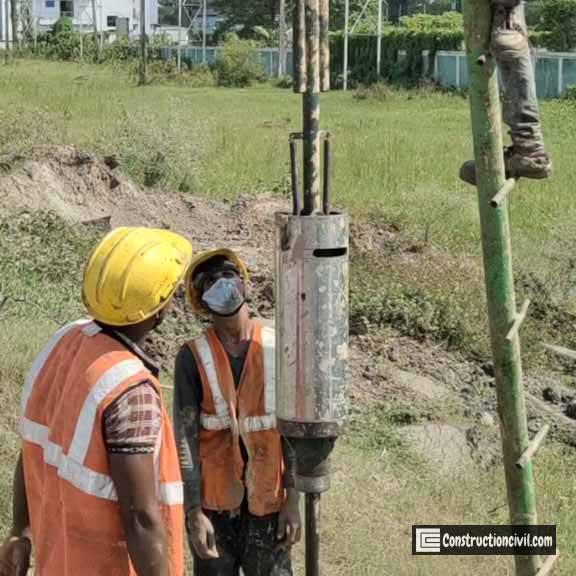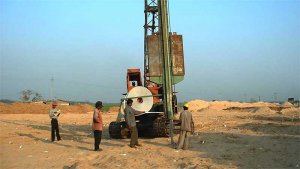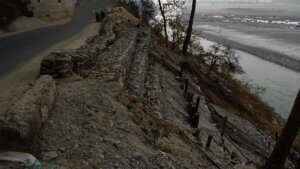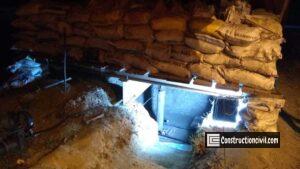What is the Standard Penetration Test(SPT)?
SPT test for soil has been carried out inside the boreholes, which is generally 150mm diameter and at specified location as per IS:2131-1981 “Method of Standard Penetration Tests for soils”. In the test mentioned above, a split spoon sampler is being used to collect the soil sample from the specified borehole. With the help of the standard penetration test(SPT), we can measure soil resistance.
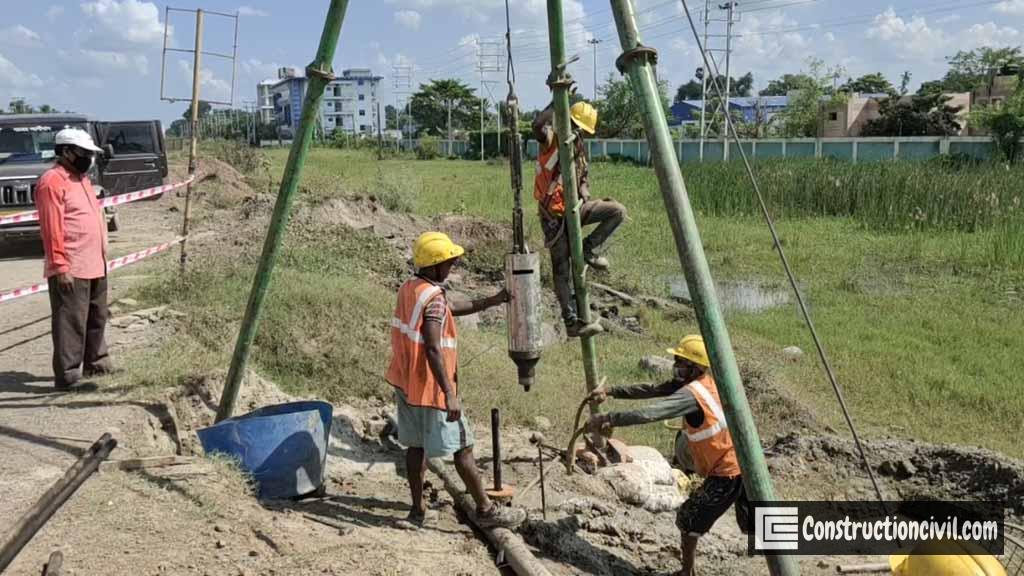
Also, Read: Geotechnical Investigation Objectives and Guidelines
- First of all, the split spoon sampler holding on the bottom of the borehole is allowed to sink under its self-weight, then the sampler is seated with the help of a hammer blows falling through 750mm height.
- The driving arrangement consists of a driving head and a 63.50 kg weight.
- After that, a split spoon sampler is finally driven by 30cm. The number of blows required to drive every 15cm penetration is noted.
- The first 15cm of the drive is recognised as a seating drive, and the total blows needed for the second and third 15cm penetration is termed a penetration resistance, N value. The N-values for each borehole is given in bore logs data.
Site Preparations, SPT Test for Soil:
- Proper Safety barricading is to be provided before the start of activities.
- Arranging facilities for water and electricity supply before SPT test of soil.
- Arranging suitable working platforms where boring rigs have to operate on unstable ground.
- Inspection of all machinery and plant before start of SPT test for soil.
- The boring sites will be monitored by the SHE managers.
- The borehole locations shall be covered with adequate warning signs to avoid any accidents.
List of Major Equipment for SPT Test:
The following equipment will be used during the SPT test for soil and provided at each worksite.
- Soil Investigation Assembly
- Split spoon sampler
- Shelby tube
- Sampler storage box
- Drop weight
- Casing pipe
- Guide rod
- Storage tank – 1 no.
- Drilling Mud Pump— 1 no
Also, Read: Laboratory Test on soil – Procedures and Objective
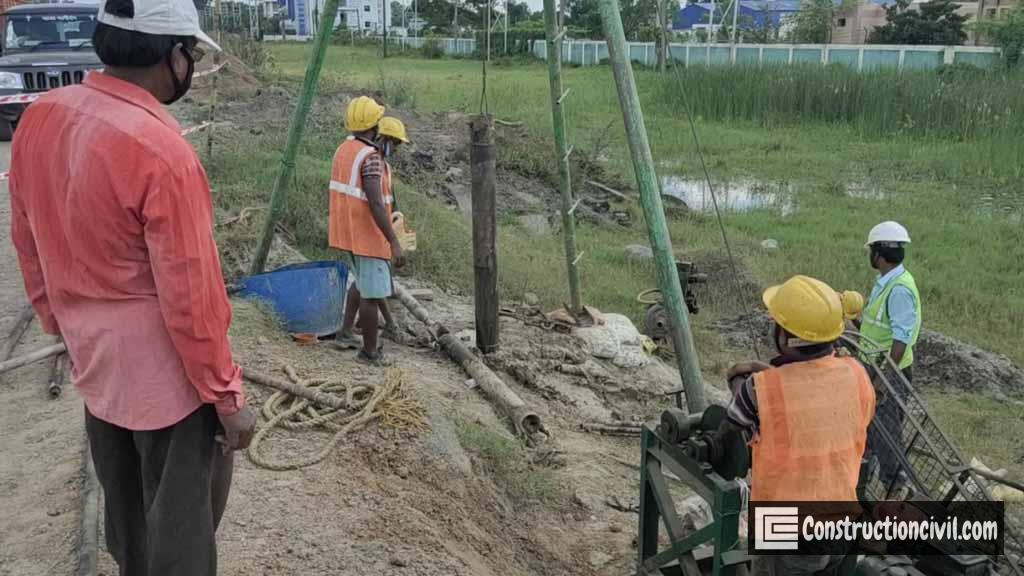
Also, Read: Plate Load Test for Soil – Procedure and Limitations
SPT Test Procedure:
- In the first stage of the SPT test for soil, we have to penetrate the sampler by 15cm, and accordingly, we have to count the number of blows required to penetrate that soil sampler into the soil by 15cm.
- Next stage, we have to penetrate that sampler into the soil again by 15cm.
- Again, we have to penetrate the soil sampler into the soil by 15cm in the third stage. So, in three stages, a total of 45cm penetration is required.
- We have to count and record the number of blows needed to penetrate 15cm separately in each stage of the SPT test for soil.
- The First 15cm penetration number is generally ignored due to the existing disturbance at the bottom of the drill hole.
- Furthermore, the summation of the following two stages penetration value, 30cm penetration, is designated as the standard penetration number for the SPT test of soil.
Checks During SPT Test for Soil:
- It is to be ensured that the energy of the hammer is not decreased by friction between the hammer & guides or between the ropes.
- The rod to which the sampler is connected for driving is straight, tightly joined and correctly aligned.
Conditions of Refusal for SPT Test of Soil:
- If fifty blows are required for any 15cm drive, then it is called the refusal.
- If a hundred blows are obtained for the required 30cm penetration, then it is called the refusal.
- Ten successive blows produce no advance is called the refusal.
- Moreover, if there are any three conditions observed in the field, then we can say this is the refusal of the test.
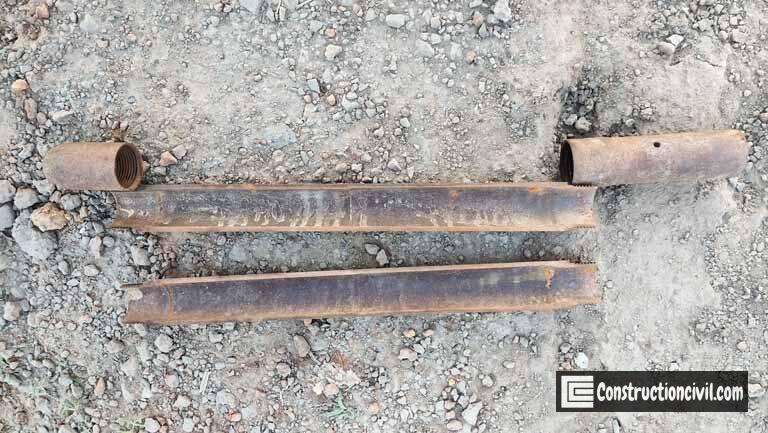
Also, Read: Vertical Pile Load Test Procedure – Kentledge Method
Corrections for SPT Test of Soil:
- Hammer efficiency correction(N’70)
- Overburden correction(CN)
- Correction for hammer efficiency(n1)
- Correction for drill rod length(n2)
- Correction for the sampler(n3)
- Correction for borehole diameter(n4)
Hammer Efficiency Correction:
- SPT test for soil is standardised into some energy ratios. The energy ratio, expressed in percentage, is the ratio between the actual hammer energy to sampler and input energy.
- Ultimately, the input energy will be the hammer’s weight multiplied by free fall height.
- So, if we know the hammer’s weight and the height of free fall, we can determine that particular hammer’s input energy.
- This input energy may not be transferred to drive that soil sample into the test condition in the field.
- So, we have to apply some corrections considering the standard energy ratio as 70. Now in the field, we generally express the N value as N’70(CN x N x n1x n2 x n3 x n4) after applying all the above corrections.
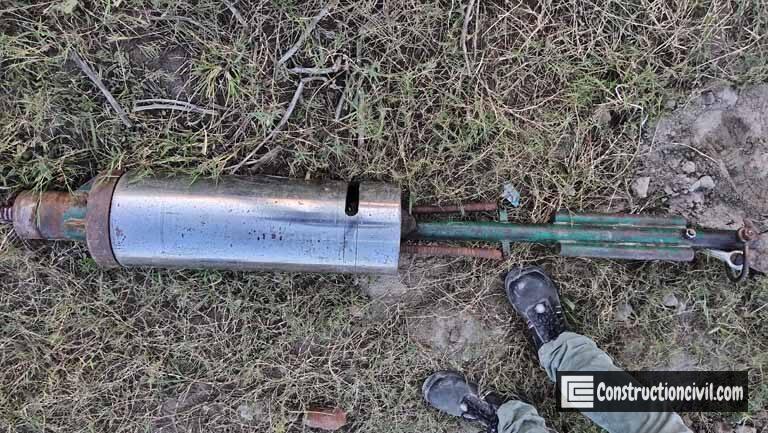
Also, Read: Lateral Load Test Pile – General Arrangement & Procedure
Overburden Correction:
- Overburden pressure plays a vital role in determining the SPT for the granular soil type.
- The effective overburden pressure is less near the ground surface, and when we go into the deeper strata, the effective overburden pressure is very high.
- So, there is some correction due to this less and more effective overburden pressure in different soil strata. The CN is the correction due to effective overburden pressure.
Correction Factor n1 for Hammer Efficiency:
- It represents the ratio of Er and Erb, where Er is the energy ratio, and Erb is the standard energy ratio.
- Now depending upon the type of hammer, this Er value varies. Generally, there are two types of hammers used in the SPT test for soil. One is a safety hammer, and the other is a donut hammer.
- For donut hammer, Er value varies from 45-67 and for safety hammer, Er value varies 70-80 for the rope pulley or cat head system and 80-100 for a trip or automatic.
- Suppose if the energy ratio at any condition is 80 and the standard energy ratio value is 70, then the efficiency correction due to hammer is 80 divided by 70; that is 1.15. So, in this fashion, we can correct this N value at any energy ratio condition depending upon the type of hammer we are using in the SPT test for soil.
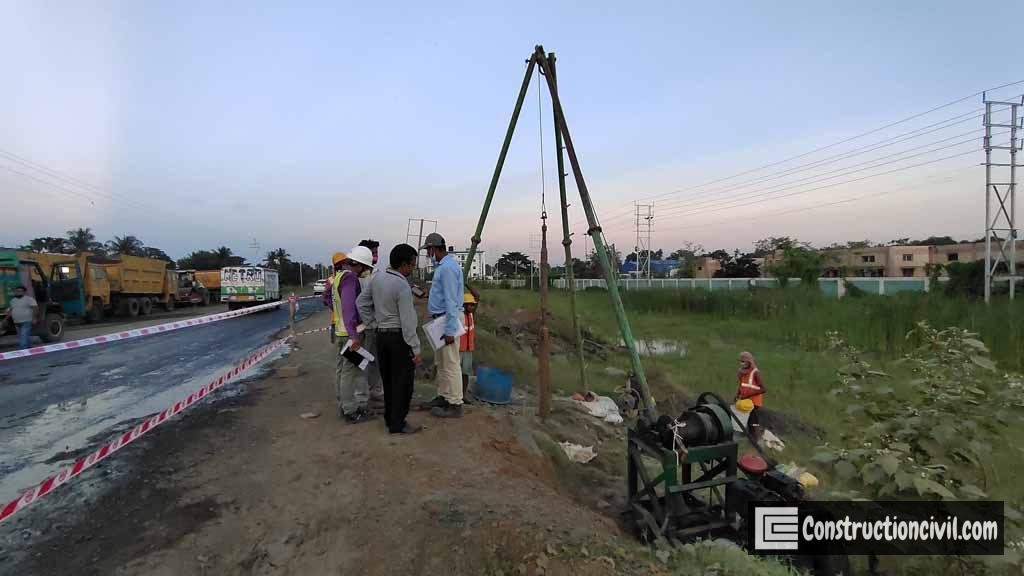
Also, Read: Integrity Test of Pile – Purposes, Procedure & Limitations
Correction Factor n2 for Drill Rod Length:
- Rod length greater than 10m, the correction factor is 1.0
- Rod length 6-10m, the correction factor is 0.95
- Rod length 4-6m, the correction factor is 0.85
- Rod length 0-4m, the correction factor is 0.75
Correction Factor n3 for The Sampler:
- Without a liner, correction is 1.0
- Within liner for dense sand and clay, it is 0.80
- Within liner for loose sand, it is 0.90
Correction Factor n4 for Borehole Diameter :
- Hole diameter 60-120mm, the correction factor is 1.0
- Hole diameter 150mm, the correction factor is 1.05
- Hole diameter 200mm, the correction factor is 1.15
- The correction factor equals 1.00 for all diameters for hollow-stem augers, where the SPT is taken through the stem.
Laboratory Tests:
The laboratory tests on collected soil samples have been started shortly after receiving the sample in the laboratory. Following laboratory tests are conducted to determine the physical and engineering properties of undisturbed and disturbed soil samples.
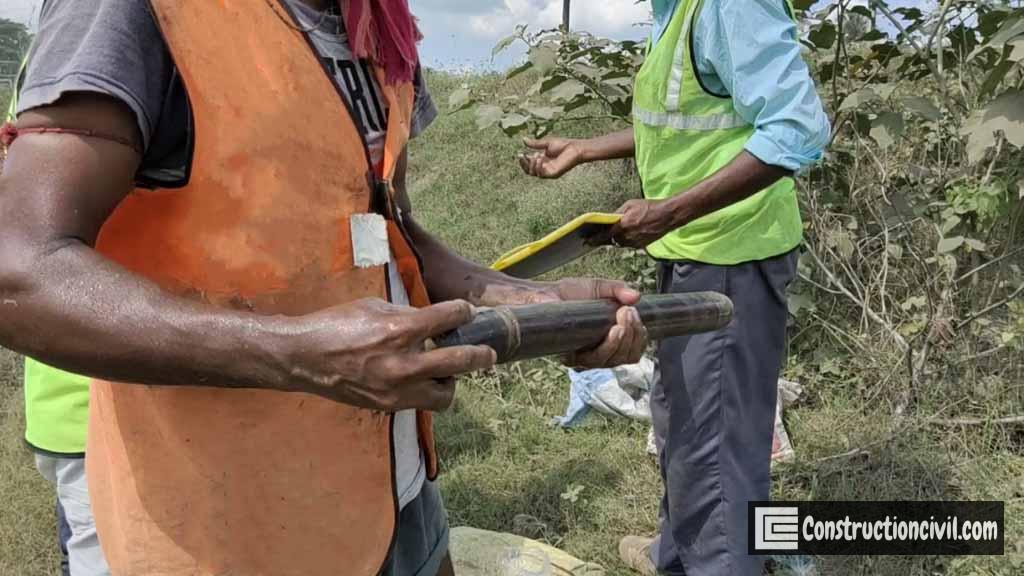
Also, Read: 4 Important Bentonite Test for Piling – Equipment & Procedure
- Dry density and moisture content (IS 2720 part-2 & 29)
- Particle size analysis- (IS 2720 part-4 1985)
- Atterberg’s limit – (IS 2720 part-51985)
- Specific gravity – (IS 2720 part -3/sec2 1980)
- Shear test – (IS 2720 part-11 1986)
- Consolidation test-(IS 2720 part-15 1986)
- Test for free swell and Swell pressure -(IS 2720 part-40 1977, part-41 1977)
All the above tests are carried out as per the respective Indian code.
Also, Read: Determination of Sieve Analysis For Fine Aggregate
